A toad is a type of amphibian that looks similar to a frog but has some key differences. Toads usually have dry, bumpy (warty) skin, shorter legs, and a more squat, stocky body compared to frogs, which are generally slimy, smooth-skinned, and better built for jumping.
Toads are found in many parts of the world, in environments ranging from forests and grasslands to gardens and even deserts. Like frogs, they’re amphibians, which means they live part of their life in water and part on land. Toads lay their eggs in water, and the eggs hatch into tadpoles before transforming into adult toads in a process called metamorphosis.
Scientific Classification
-
Kingdom: Animalia
-
Phylum: Chordata
-
Class: Amphibia
-
Order: Anura
-
Family: Bufonidae (True Toads)
There are over 600 species of toads, most of which belong to the Bufonidae family, the true toads.
Common Names
-
Toad (general name)
-
In Yoruba: Akèrè
-
In Igbo: Anụ mmiri ugbo (“farm water animal”)
-
In Hausa: Kurciya
-
In many cultures, toads are associated with rain, farming, and transformation.
Geographic Distribution
Toads are found on every continent except Antarctica. They live in:
-
Wetlands
-
Farmlands
-
Forest floors
-
Gardens and parks
-
Deserts (some desert toads can survive dry seasons by burrowing!)
You’ll find several native species across Nigeria, and other countries in Africa, Asia, Europe, the Americas, and Australia.
Physical Characteristics
Unlike frogs, toads are usually dry, rough, and warty. They are built for life on land.
-
Skin: Dry, bumpy, and tough (good camouflage)
-
Legs: Short and strong, made for walking or small hops
-
Body: Round with a wide head and big eyes
-
Color: Brown, olive, gray, or black
-
Defense: Many toads have poison glands behind their eyes (parotoid glands)
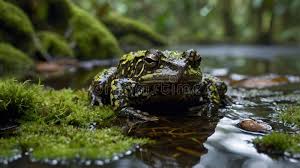
Image showing a close-up of a toad on moist soil, blending in with leaves (Source: Dreamstime.com)
Major Types of Toads
1. Common Toad (Bufo bufo)
-
Region: Europe and parts of Asia
-
Size: Medium
-
Color: Brown with golden eyes
-
Habitat: Forest floors, gardens, and ponds during mating season
-
Behavior: Slow-moving, often active at night
 Image showing a common toad sitting still on a mossy log in the woods (Source: iStock).
Image showing a common toad sitting still on a mossy log in the woods (Source: iStock).
2. African Giant Toad (Amietophrynus superciliaris)
-
Region: West and Central Africa, including Nigeria
-
Size: Large, up to 20 cm
-
Color: Dark with ridges and horns above eyes
-
Habitat: Rainforests and farmlands
-
Note: A master of camouflage, looks like a leaf when sitting still
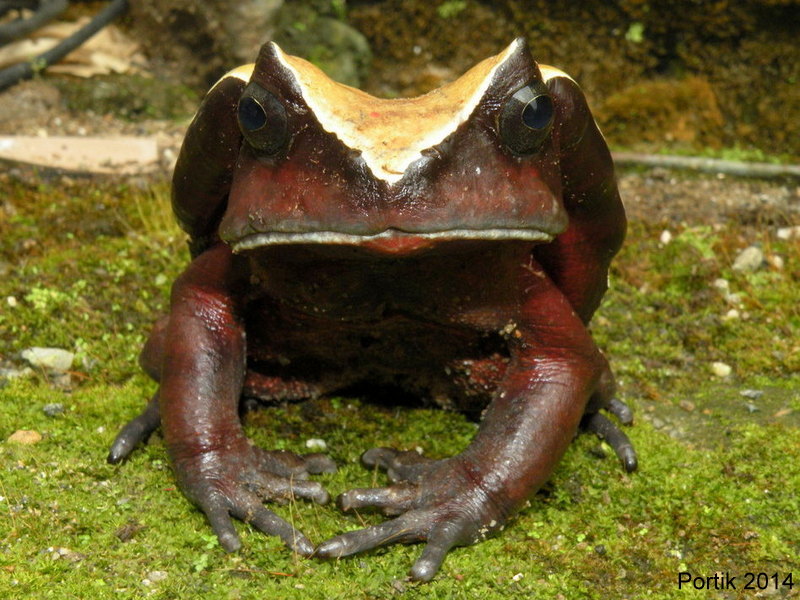 Image showing an African Giant Toad resting on a forest floor (Source: Amphibia View)
Image showing an African Giant Toad resting on a forest floor (Source: Amphibia View)
3. Cane Toad (Rhinella marina)
-
Region: Native to South and Central America; introduced to Australia
-
Size: Very large
-
Color: Brown with warty skin
-
Note: Known for being invasive and toxic to predators
-
Diet: Eats insects, small animals, even pet food.

4. Natterjack Toad (Epidalea calamita)
-
Region: Europe
-
Size: Small to medium
-
Color: Pale with a yellow stripe down its back
-
Sound: Loud, rattling croak during breeding season
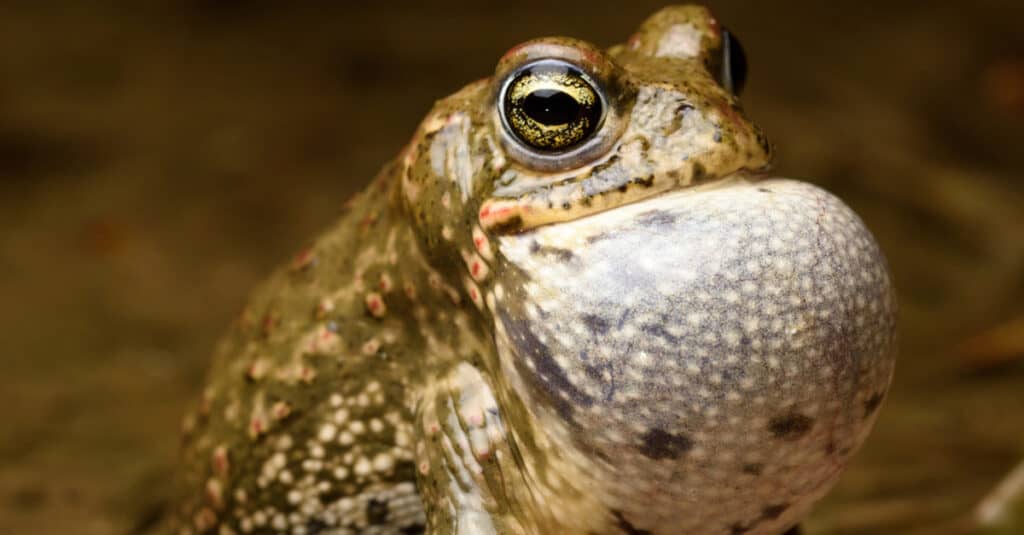 Image showing a Natterjack toad calling near a shallow pool at dusk (Source: A-Z animals)
Image showing a Natterjack toad calling near a shallow pool at dusk (Source: A-Z animals)
Fun Facts About Toads
-
Toads don’t live in water all the time like frogs, only when breeding.
-
They lay eggs in long strings, not clusters.
-
Their wart-like glands can release toxins that protect them from predators.
-
Toads can eat hundreds of insects per night.
-
Some species burrow underground during heat or drought.
Why toads matter
-
Natural pest control: Toads eat flies, beetles, ants, slugs, mosquitoes, and more.
-
Farming friends: Having toads in your garden or farm means fewer pests and less need for chemicals.
-
Bio-indicators: Because they breathe through their skin, toads are sensitive to pollution. A healthy toad population means a healthy environment.
Health & threats
Toads face several dangers, especially in the wild:
-
Pesticides and chemicals
-
Habitat destruction (wetlands being drained or forests cleared)
-
Climate change and unpredictable weather
-
Road deaths during migration
-
Pet trade (some species are taken from the wild)
Conservation Status
-
Some toads are common, like the Common Toad and Cane Toad.
-
Others are endangered due to shrinking habitats, like the Harlequin Toad.
-
Protecting wetlands, forests, and breeding pools helps toads thrive.
Toad vs Frog
| Feature | Toad | Frog |
|---|---|---|
| Skin | Dry, rough, bumpy | Smooth, moist |
| Legs | Short and thick | Long and slim for jumping |
| Habitat | Land (returns to water to breed) | Near or in water |
| Eggs | Laid in strings | Laid in clumps |
| Movement | Walks or hops | Jumps and swims |
For toad rescue, wildlife advice, or eco-friendly pest solutions, you can reach out to us at Doctor Hulk Veterinary Hospital, or call 08143397614








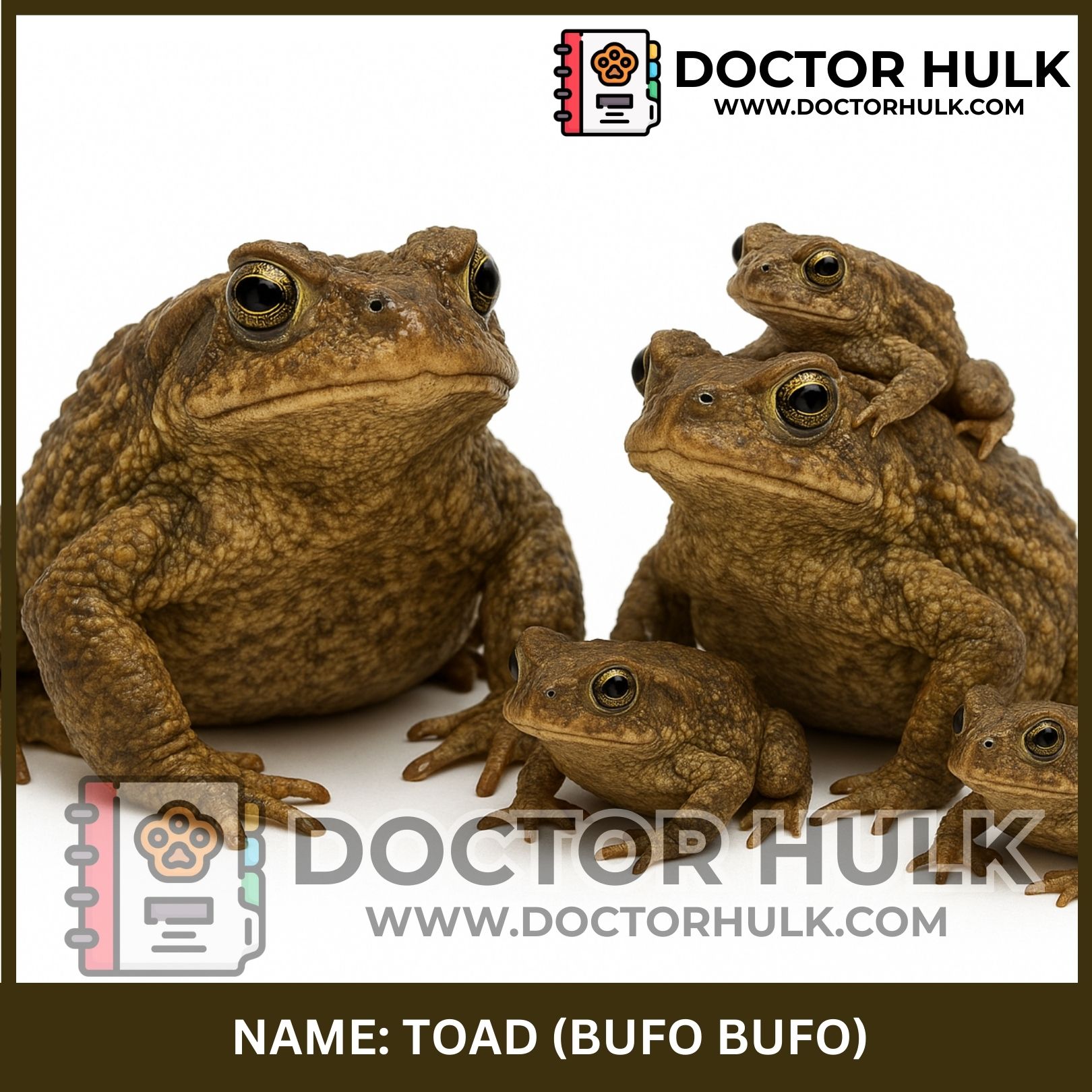
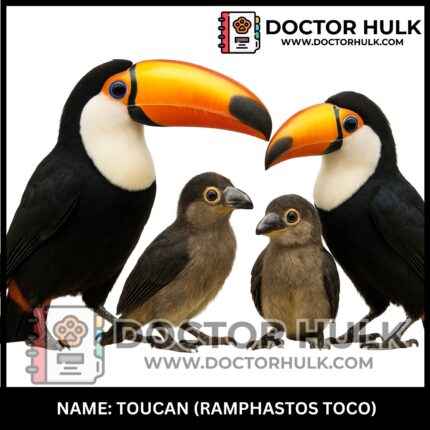




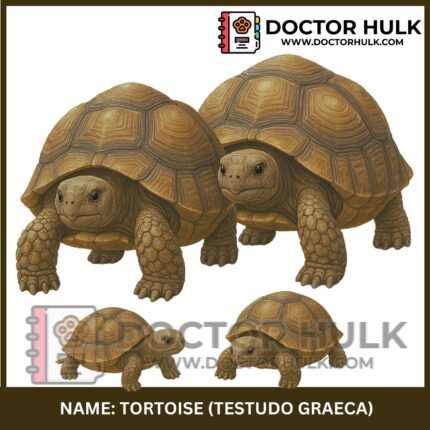
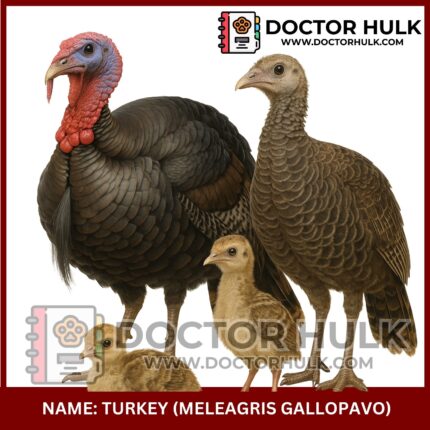
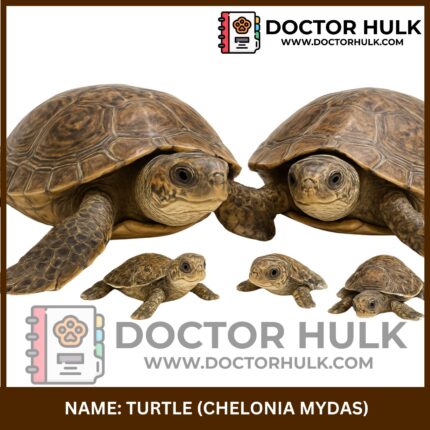

Reviews
There are no reviews yet.